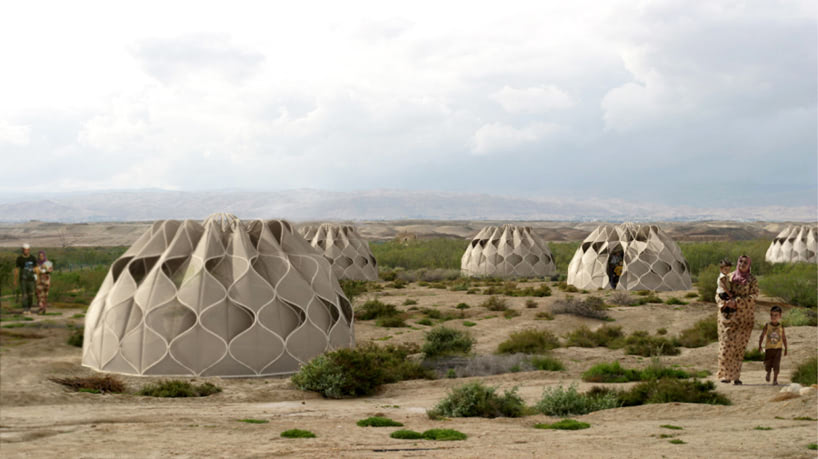Inspired by temporary huts of nomadic tribes, designer Abeer Seikaly created a disaster shelter for refugees using patterned fabric. The project, called Weaving a Home, is based on ancient traditions of intertwining fibers and materials to make complex three-dimensional shapes for functional and social needs.
Thanks to technological advances and new methods of assembly, the structural fabric is lightweight and mobile. The tent is made of durable plastic members and flexible envelopes that fold across a central axis, with the hollow structural skin enabling necessities such as water and electricity to run through it, similar to a typical stud wall.
As its creator explains: “Weaving a Home reexamines the traditional architectural concept of tent shelters by creating a technical, structural fabric that expands to enclose and contracts for mobility while providing the comforts of contemporary life (heat, running water, electricity, storage, etc.).
Design is supposed to give form to a gap in people’s needs. This lightweight, mobile, structural fabric could potentially close the gap between need and desire as people metaphorically weave their lives back together, physically weaving their built environment into a place both new and familiar, transient and rooted, private and connected. In this space, the refugees find a place to pause from their turbulent worlds, a place to weave the tapestry of their new lives. They weave their shelter into home.”
Source: designboom

Share your thoughts and join the technology debate!
Be the first to comment